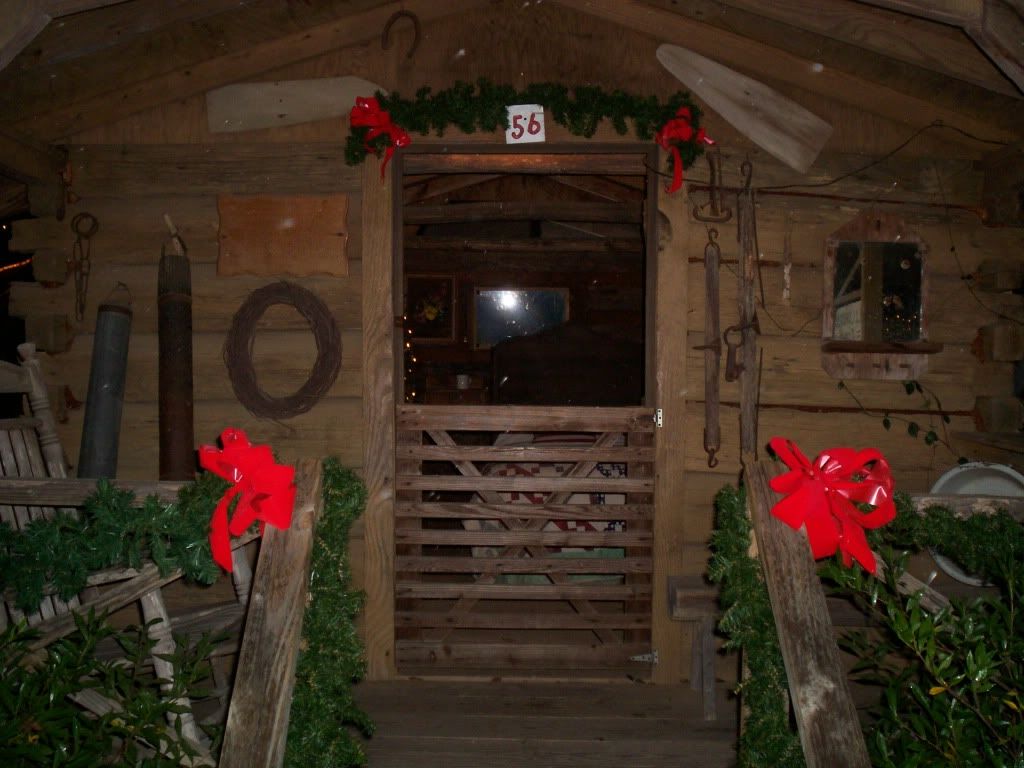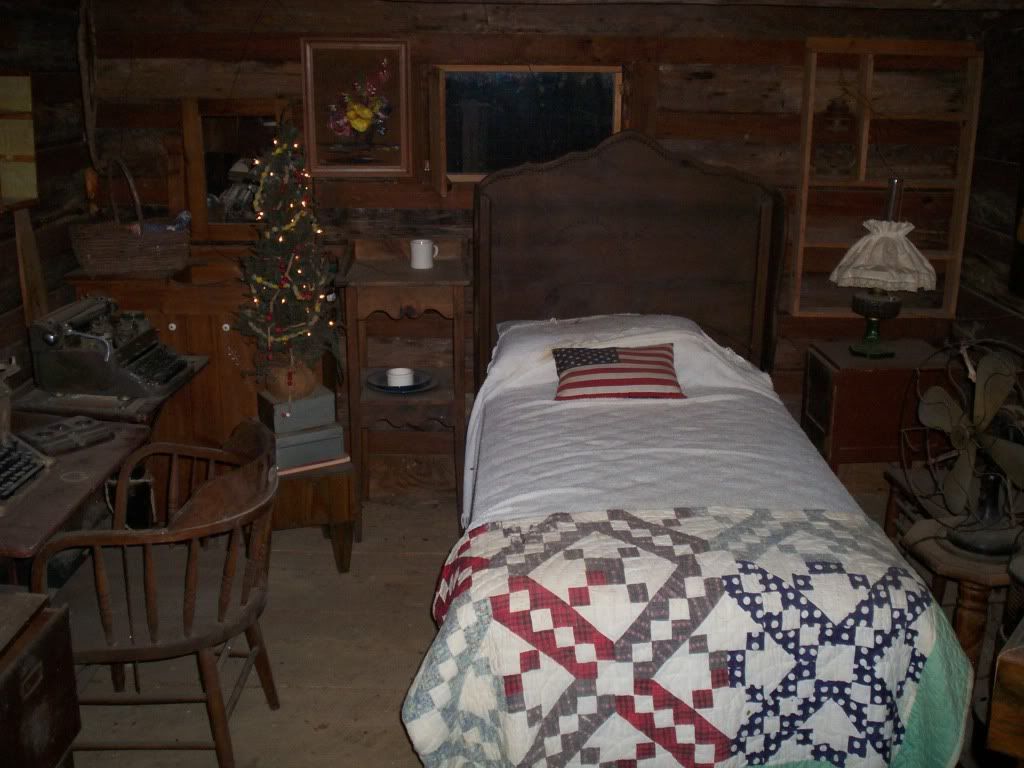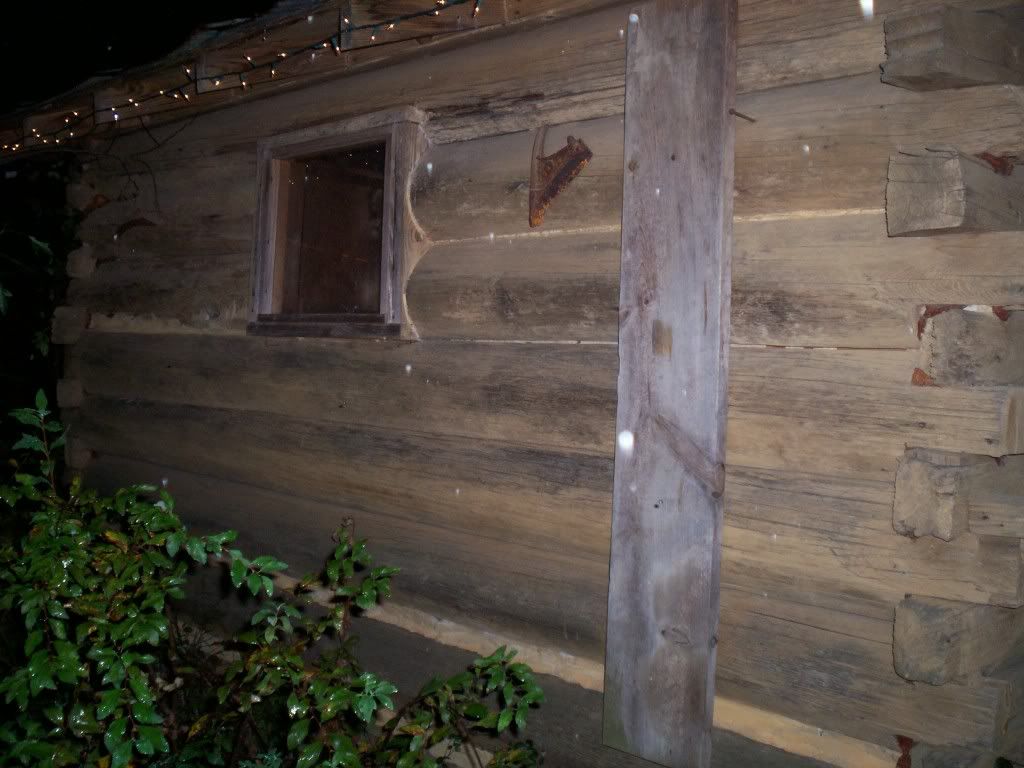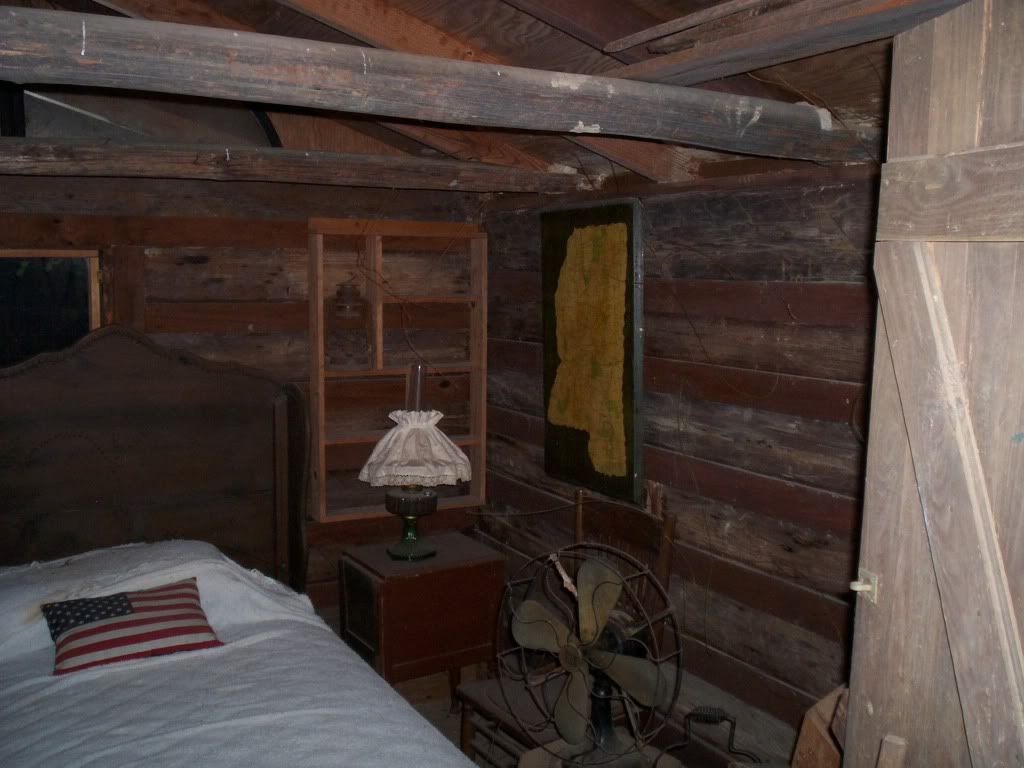It's called Landrum's Country, and it's located in the piney woods
of Jones County. A picket fence, reconstructed log cabins, a quaint
chapel, and an endless line of stores, food vendors, and fun activities
provide a wealth of entertainment for visitors of all ages. Had I thought
about it, I'd have taken more pictures to give you an idea of what it
looks like. There's so much to see, from a grist mill to an old cypress
pirogue, wagons, plows, antique tools, tractors, local artifacts, and
plenty more.
A band of Confederate reenactors (some of my best buds and campmates)
puts on a mock battle with a band of Yankees each year. I abstained this year,
choosing to sit by the fire and eat their fine "possum" soup. It's really
turkey, but you get such a fun reaction when you tell folks it's possum.
We've debated catching a possum and keeping him in a cage near the fire,
in case we run out of turkey next year.
Anyway, on to the point! The old cabins and log homes on the place caught
my eye, and I went on an exploratory journey. There's an old dogtrot
they've framed in, adding a hallway and a nice parlor, a log corn crib,
and several round-log cabins from the area. One of those cabins was built
during the War. If you live in the South, you don't need to specify
"which" war. It's just The War, and we all know you're referring to the
northern invasion. Around 1863, a local soldier came home on leave and
built himself a split-log cabin of clear pine logs about 8-10 inches in
diameter.
I'd never seen such a snug cabin built of halved logs, and it gave me
some inspiration. The notches are simple square notches, and whoever
restored the cabin spiked them with nails for added support. It's roughly
11X11 on the exterior, and 10X10 on the inside. A low ceiling and solid
tie-beams, coupled with the inviting porch and gleaming lamp, offered an
inviting glimpse of the past.
The plywood used in the reconstruction of the roof, along with the modern
nails and modern materials used to replace cracked chinking, made my
inner log purist snarl...but hey--it's much better than no roof and big
gaps between the logs, right? Some of the logs on the back side are in
pretty rough shape with large, gaping cracks and chunks missing; I hope
they're planning on sealing them somehow. I'd hate to see such an amazing
old building crumble away. I'm glad people like the Landrums care enough
about our local history to rescue such old barns, cabins, and outbuildings. If
I had the money, I'd be doing the exact same thing. More power to you, Mr. Tom!
Here's a look at the inside:
The square notches:
The other side:
A sealed wall where the old hearth used to be:
Here's a shot of the narrrow strips placed along the butted log sides. I
imagine they were placed there to have a backstop for the chinking.
Next time we go, I'll get pictures of all the other buildings. There are
some fine examples of deep south cabin-craft, as I call it. The little
cabin we've been looking at here gave me several ideas, not least of
which was using split logs. For such a small cabin (10X10), and in our
very mild climate (it rarely dips below 30 in the winter, and never lasts
more than a few days even at that temperature), 4-5 inches of log wall
would provide plenty of insulation. The narrowest part of these logs are
about 4 inches. It looks like the builder split the logs, then hewed or
adzed the tops and bottoms to a flat surface. After notching, they sat
directly on each other and provided a tight seal. A small bead of
chinking would have been plenty to provide protection from the elements.
Due to extra hours at work and the obligations of the Christmas season, I
haven't done much toward building my little cabin, but I'm planning to mark
off the foundation and figure out whether we're using cinder blocks, bricks,
treated posts, or lighter'd chunks, if I can find them. If you don't know what
lighter'd is, stay tuned and I'll post some nice pictures of these beautiful old
pine knots.







No comments:
Post a Comment